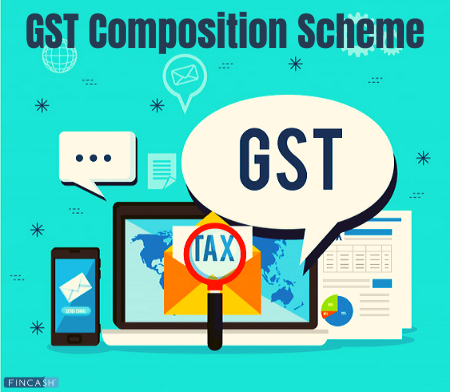Major Benefits of GST to Consumers, Traders and Government
Goods and Services Tax (GST) is an indirect tax on the supply of goods and services in India. The benefits of GST is quite high for the Indian consumer as it has reduced the burden of several Taxes and brought it under one roof. It is important to know that GST is a tax that the buyers don’t pay directly to the government. They pay it to the producers or the sellers. And, these producers and sellers then pay it to the government.

GST has faced a lot of criticism during its inception. However, the common man has realised its benefits over a period of time. Let's look at how Goods and Services Tax has benefited the entire Value Chain.
Advantages of GST to Consumers
1. Decrease in the price of goods & services
Since GST is charged at all levels of the supply chain, a considerable difference can be found in the prices of the products. While consumers would have to pay separate taxes before, they now have to pay just one tax. A customer will be able to avail the advantages of GST cost that will be lesser than VAT or service taxes.
Food items, such as basic food grains & spices fall under the Range 0-5% GST, this might be extremely beneficial for the customers as they are cheaper to buy. Packaged products like shampoos, tissue papers, toothpaste, soaps, electronic items have become cheaper.
Other observed GST slab rates are:
- 5% corresponds to mass consumption items such as Spices
- 12% corresponds to processed food
- 28% corresponds to white goods
- 28% plus cess correspond to luxury goods, aerated drinks, tobacco, etc.
2. Same price around the country
One of the major advantages of GST is the fact that a consumer will be able to avail the product at the same price anywhere in the country. However, the products that fall under the GST tax-slab come under this advantage.
3. Simplified tax system
The entry of GST into the Economy has made the tracking of taxes easier than ever before. Since GST works on a computerized system, consumers can be fully aware of the amount they are paying in taxes for the goods and services.
Every time you purchase goods and services; you will be able to see the amount you paid in tax on the Receipt.
Talk to our investment specialist
Benefits of GST to the Government
1. Foreign investments
Goods and Services Tax (GST) was launched with the motto of ‘One Tax One Nation’. Common and accountable markets help attract foreign investment and promotes Indian products at an international platform.
2. Boost in the import & export Industry
Attracting foreign investment will not only help Indian products and services reach a global platform, but also give a boost to the Import and export Industry. The more trade takes place the better job opportunities are created.
The unemployed of the country will get jobs and newer businesses will enter the Market. The overall economic situation in the country will improve.
Benefits of GST to Traders
1. Transparency
Traders could be wholesalers, retailers, importers and exporters, etc. One of the major advantages is the transparency that comes with GST. It makes the business transaction easy for traders as they have to pay GST for everything they purchase along the supply chain.
2. Easy borrowing
Digitalisation has brought about immense ease in transactions to society and has made life much easier for both consumers and traders. GST brought the recording of every financial transaction on its system which makes it easier for small and large businesses to maintain their transactions’ record.
Maintaining this record makes it much easier to take loans from banks or other businesses since the system has the history of the assets and the repayment ability of the trader.
3. Easy entry into the market
This is another major advantage for any business under the GST tax regime. With the clarity in market processes, a better flow of action between the various traders can be maintained.
This makes the entry of any trader into the market easier as compared to previous times.
About E-way Bill
Electronic Way Bill (E-way Bill) is a document which is generated electronically for the movement of goods from one place to another. This could be both intra-state or interstate of the value of more than Rs. 50,000 under the GST tax regime.
The E-way Bill replaced the ‘Way Bill’ which was a tangible document existed during the VAT tax regime for the movement of goods.
The generation of E-way Bill was made compulsory from 1st April 2018.
Registration of E-way Bill
- Login to E-way Bill System
- Click ‘Generate new’ under ‘E-way bill’ option
- Enter your transaction type, Sub-type, Document type, Document number, Document date, Item details, Transporter details, etc.
- Click on ‘Submit’
Conclusion
Goods and Services Tax (GST) has brought in major advantages and has simplified the tax system for everyone in the country. Though there have been certain a considerable increase in the prices of certain products and services, the consumer or the trader can maintain and increase their assets under the GST tax regime.
FAQs
1. How does GST eliminate the cascading effect of taxation?
A: GST reduces tax-on-tax and indirect taxation. It does away with multiple compliances like VAT, service tax, etc. thereby increasing the outflow. With GST, the outflow has been effectively reduced and hence eliminated the cascading effect of taxation.
2. How does GST help small businesses?
A: GST has brought in the composition scheme, which is a boon for small businesses. It has effectively reduced the number of tax compliances & burden for small businesses.
3. How has GST made it easier for borrowers?
A: With the help of the GST, a record for all financial transactions can be easily maintained. This has made it easier for small and medium-sized businesses to keep precise records of all monetary transactions, including money they have borrowed from the market with ease.
4. Has GST made business transactions more transparent?
A: Yes, with the GST, all business transactions have become transparent and easy to understand. For individuals starting from consumers, business people, retailers, wholesalers, importers, and exporters, only one form of tax needs to be paid: the GST.
5. Has online filing of tax become easier?
A: Yes, with GST, it has become easier for owners of business organizations to file for taxes online. This has proved to be especially helpful for start-up owners as they no longer have to understand the intricacies of VAT, service tax, excise, and other such details when it comes to filing for tax online.
6. With GST, have the number of compliances become lesser?
A: Yes, GST has effectively reduced the number of compliances. Now only one type of tax needs to be filed by business owners, which is Goods and Services Tax.
7. How has GST reduced indirect taxation?
A: Companies have to pay much less tax than they did under VAT. This virtually eliminates any form of double taxation, and hence, GST has reduced indirect taxation.
8. Is GST helping consumers?
A: Consumers have to pay only the GST and not any other additional tax for the items they have purchased. It simplifies the purchase process for consumers.
9. Has the common man benefited with GST?
A: As the cascading effect of tax has been reduced, the common man does not have to pay multiple taxes and cess. Moreover, the money collected through GST is used to fund development in the underdeveloped areas in India. Hence, the common man has benefitted from the introduction of GST.
10. How has GST helped the unorganized sector?
A: Unorganized sectors like textile and construction benefited through GST as now there are provisions for online payment, compliances, and receipts. Thus, even these industries have achieved a certain amount of Accountability and regulation.
11. How has GST helped supply chain management?
A: GST has helped with supply chain management as the same tax applies across the country. Hence, the tax can be effectively transferred to the end of the supply chain. Moreover, this improves the overall Efficiency of the supply chain.
12. How is GST calculated?
A: GST is calculated at 18% of the price of the item. For example, if the goods or services are sold at Rs. 1000, then the GST is Rs. 180. Hence, the net price of the goods or services will be Rs. 1180.
13. Who collects the tax?
A: GST is collected by the individual state governments and the central government. However, you have to file for GST online.
14. Who levies the GST?
A: The central government levies GST.
15. Do the state governments have any role in charging GST?
A: Transactions within a single state are taxed under the dual GST known as CGST (Central Government) and SGST (State government).
All efforts have been made to ensure the information provided here is accurate. However, no guarantees are made regarding correctness of data. Please verify with scheme information document before making any investment.













Thank you for sharing your valuable knowledge